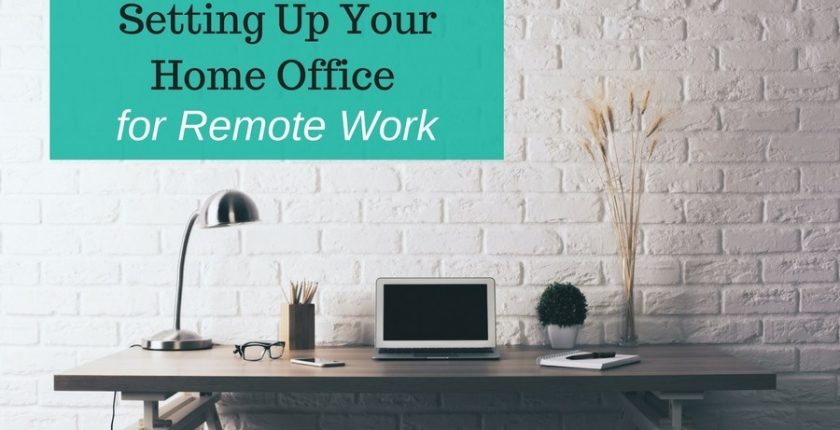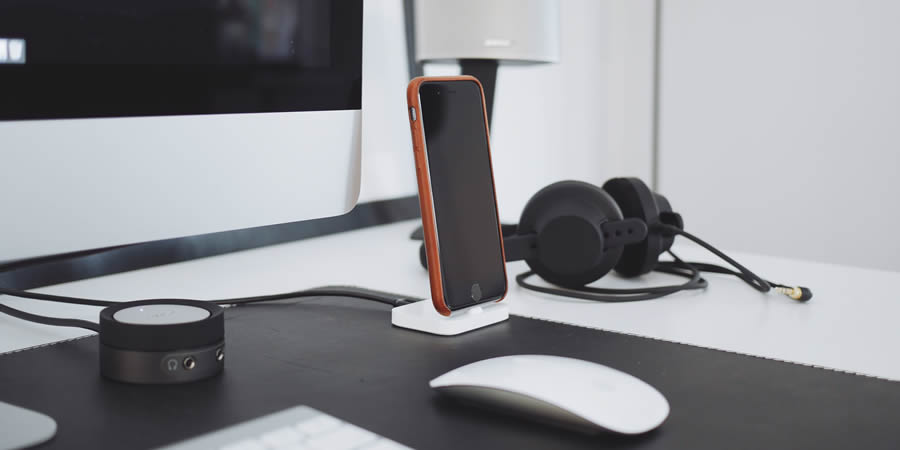
Each year, more and more people are dropping the office commute and working remotely – mostly from home. And the good news is, a remote office setup in your home doesn’t have to break the bank.
Both business and freelancers agree: Remote career opportunities boost productivity and drive efficiency.
According to data collated at Remote.co, 86% of the remote workforce said that they, “hit maximum productivity” as a result of going solo while over 60% of employers stated that working with remote teams increased the overall productivity of the company.
Cloud technology has enabled real time video conferencing and communication between remote workers, flexibility for employers and the opportunity to set up office virtually anywhere a remote worker wants to be.
Companies are going virtual and those with the discipline to work remotely and succeed are reaping the rewards. Along with the opportunities, comes the need to create a remote work environment that is conducive to productivity, comfort and efficiency. The remote workforce, like any other, still requires the technology and space to set up shop, whether it be at home, or abroad.
In addition to the creativity afforded employees and the flexibility enjoyed by employers, a remote office setup does not necessarily require a large capital outlay. If you are thinking of taking your career “remote” and entering the virtual workforce, here are a few things to consider in terms of setting up your home office environment.
Make Yourself Comfortable
The best way to decide what type of space and furniture you’re going to need is to go down to your local stationery and office furniture supply store. Rather than sitting at home and trying to imagine what you might need with the space you have, it’s far better to duck down to your local office furniture store and see what’s available to create the ideal office environment.
Among the most important environmental factors to consider with a home office is air flow and natural light. Nothing reduces productivity like a poor working environment.
Office National, a leading supplier in home office, tech and stationary, notes that brain functionality and productivity has been demonstrated to increase and workplace-related health problems decreased according to the environment in which people work.
Alongside these environmental factors are the way in which you get work done in your home office space. Not much is going to get done if you have plenty of natural light and fresh air, but uncomfortable furniture.
With the increasing awareness that we need to spend less time sitting down and more time standing up at work, the standing desk movement was born. Research tells us they are the perfect solution for working more productively, and the list of health benefits are seriously impressive.
The team at Gadget Review have become part of the standing desk movement and have spent tireless hours picking the Best Standing Desks of 2016 to help you decide which desk best suits your needs.
Make Good Use of Your Space
An increasing number of home office setups occur in small apartments. In rooms not originally designed to accommodate both home and office, space is at a premium. Having office equipment take up valuable working space can be a disadvantage.
One of the reasons that multifunction devices have become so popular is because they turn two or three bulky items into a single piece of technology that can accomplish several processes. A multifunction device that includes an all-in-one printer and scanner is a good example and a terrific way to de-clutter your workspace.
In today’s market, there are various multifunction printers and picking one can become overwhelming. There are many things to consider:
- Inkjet or laser?
- Wired or wireless?
- Colour or mono?
- Automated document feeder or manual feed?
- Extra large paper tray capacity or more trips to the printer to refill it?
To reduce the stress of choosing a multifunction printer, Choice have developed a Printers Buying Guide which will help you choose a device which best suits your needs.
However, before you make a purchase think carefully about whether you actually need a printer. Some remote employers encourage a paperless work environment so there’s nothing you need to print out to perform your role – saves you money and is great for the environment too!
Add Some Greenery
Speaking of the environment, plants are also a great addition to a home office. There are the obvious health benefits, due to the fact plants help to purify the air by releasing oxygen and absorbing carbon dioxide. And there are psychological benefits, as plants can make a work environment appear more calming and a nicer place to be. It’s like bringing the outside into your work space.
A study conducted by University of Technology Sydney in 2010 found strong evidence to support the positive impact plants can have on workers. Interestingly, just one plant can be enough to make your work area feel more comfortable which in turn can reduce stress, improve your mood and increase performance.
Head off to your local nursery and find plants that will most easily fit into your home office; consider both size and the amount of work involved in caring for them.
Decide on Your Computer Hardware Needs
This is obvious but important – you will need a computer, and what type will depend on what tasks you need to perform in your remote job.
For most, this is a personal decision. Those who favour a Mac, for example, will usually work in design and graphics. A PC is often preferred by programmers, and also has word processing and compatibility advantages.
Secondly, you will need to decide between a desktop or laptop computer. Do you intend to work solely from home or will you need to work on the go? There are pros and cons to both laptops and desktop computers. Computer Hope provides a guide to choosing which set-up will best suit your needs. Your final decision might also depend on your budget.
Your keyboard and mouse are the most direct connection you have with your computer, but many people look past these basic yet essential pieces of equipment when they work from home. Working remotely could mean you spend hours sitting in front of your computer, and this increases your risk of RSI (Repetitive Strain Injury). So it’s important for your health to invest in ergonomically friendly devices.
Brian Westover from PC Mag has a useful research article from their PC Labs blog that will guide you through finding a mouse that’s right for you.
Consider Audio and Visual Communication Needs
Will your work require audio and visual contact with your employer and other members of a remote team? It’s highly likely when you have a remote job.
Most laptops will come bundled with hardware that is suitable for routine audio and visual communication. For some a simple smartphone or tablet will be sufficient. But if your role requires communicating with customers, sharing screens or hosting online meetings you may require a better setup.
The basics you need to consider are:
- A Webcam
- A quality microphone
- Good lighting
- Portability
The particular tools needed for any remote worker are going to be determined by the type and scope of work you’re doing.
Again, the best idea is to go out into the marketplace and look at what’s available and imagine how it’s going to work in your remote office. Do your research online, but then hit the pavement. Visiting the stores and seeing what’s on offer is a far better solution than purchasing everything online, getting it in the front door, and realising you’ve made some poor choices.
As a final note, before stepping out and spending money on equipment for your home office, check if your employer will provide or subsidise equipment needed to perform your role. These perks are becoming quite common with remote-friendly companies. In addition to covering the cost of a computer, office furniture and office accessories, some will even reimburse Internet, phone and cloud storage costs. These are just some of the benefits employers are offering remote workers to help them work productively.




